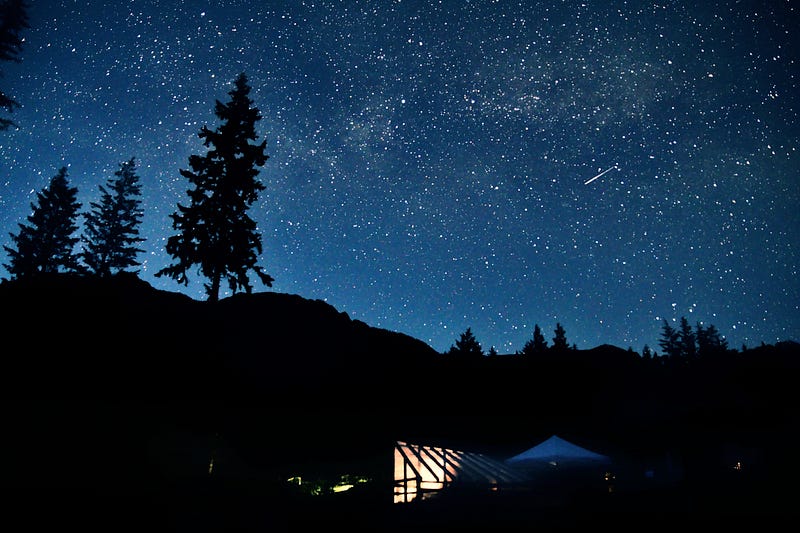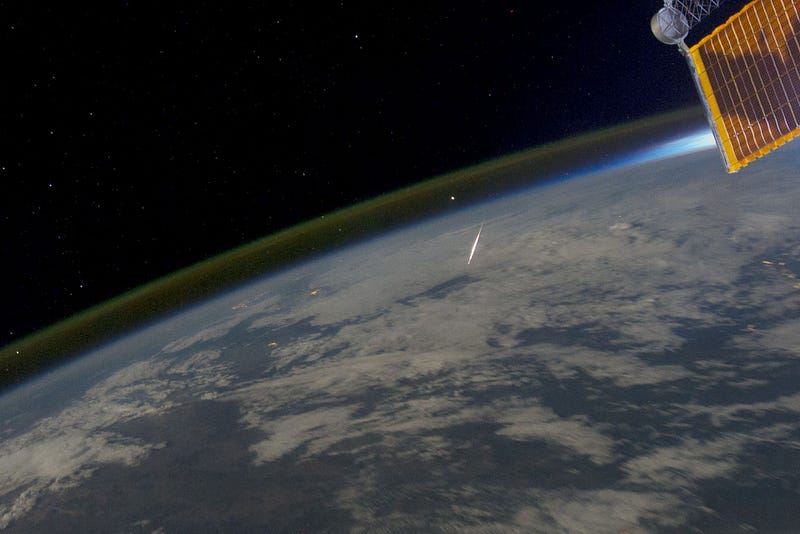# Two Meteor Showers Set to Illuminate the Night Sky This Week
Written on
Chapter 1: Overview of Upcoming Meteor Showers
This week, enthusiasts around the world can look forward to a spectacular celestial event as two meteor showers are set to light up the night sky. The southern Delta Aquarids and the Alpha Capricornids will be visible on Tuesday night into Wednesday morning.
While neither shower is typically known for particularly intense meteor activity, their combined presence could create a captivating show for stargazers. Observers might catch sight of approximately 15 to 20 meteors each hour, according to astronomers.

Photo by Alan Chen on Unsplash
The Alpha Capricornids, generally regarded as the weaker of the two, are famous for their striking fireballs that can light up the sky. These colorful phenomena last longer than typical shooting stars and can appear in various hues.
“Observers often report vivid colors for fireballs because their brightness falls well within the visible spectrum… Colors can range from red to bright blue, and occasionally violet. The composition of the meteoroid plays a crucial role in the fireball's color, as different elements emit distinct colors upon vaporization,” shares the American Meteor Society.
Between 5% and 10% of Delta Aquariid meteors leave behind persistent trails—glowing streaks of ionized gas that can linger for several seconds after the meteor has passed.

A shooting star seen from the International Space Station by Ron Garan, Expedition 28 flight engineer. Image credit: NASA
“When tracing the Delta Aquariid meteors backwards, they appear to radiate from a specific point near the constellation Aquarius, which arcs across the southern sky when viewed from the Northern Hemisphere. This radiant point aligns closely with the star Skat (Delta Aquarii), after which the meteor shower is named,” reports EarthSky.
Meteors are typically small fragments of rock and metal that incinerate upon entering Earth's atmosphere, usually about 100 kilometers (60 miles) above the surface. Regular meteor showers often result from debris left by comets. The Delta Aquariid shower is believed to originate from the comet 96P Machholz, discovered in 1986. This comet completes an orbit around the Sun every six years, with its next perihelion occurring on January 31, 2023. The source of the Alpha Capricornids remains uncertain.
Chapter 2: Preparing for the Meteor Showers
"My dad took me out to see a meteor shower when I was a little kid, and it was scary for me because he woke me up in the middle of the night. My heart was beating; I didn’t know what he wanted to do. He wouldn’t tell me, and he put me in the car and we went off, and I saw all these people lying on blankets, looking up at the sky." — Steven Spielberg
Skywatchers looking to catch this meteor shower should ideally step outside around 1 a.m. for optimal viewing. Looking towards the east, meteors should become visible every three to four minutes. The Moon will be setting around this time, enhancing visibility for those enjoying the display. Observing from dark areas away from city lights will significantly improve the experience.
This dual meteor shower will be observable by anyone in most parts of the northern hemisphere. Should clouds obscure the view, the showers will continue for several days.
“Typically, the initial nights of a meteor shower see lower activity. However, as Earth approaches the densest part of the debris stream, the number of meteors can rise sharply. Following a peak that can last from a few hours to several nights, the activity will then taper back to levels indistinguishable from a typical night,” explains Don Yeomans, manager of NASA’s Near-Earth Object Program Office.
The Perseid meteor shower, one of the most anticipated events, will follow just two weeks later, peaking from August 11 to August 12.
Meteor showers can be enjoyed by anyone who can escape bright lights. Bring along refreshments, some snacks, and a comfortable chair to fully appreciate the celestial show.
James Maynard is the founder and publisher of The Cosmic Companion. He is a New England native turned desert rat in Tucson, where he lives with his lovely wife, Nicole, and Max the Cat.
Did you find this article informative? Join us on The Cosmic Companion Network for our podcast, weekly video series, informative newsletter, news briefings on Amazon Alexa, and more!